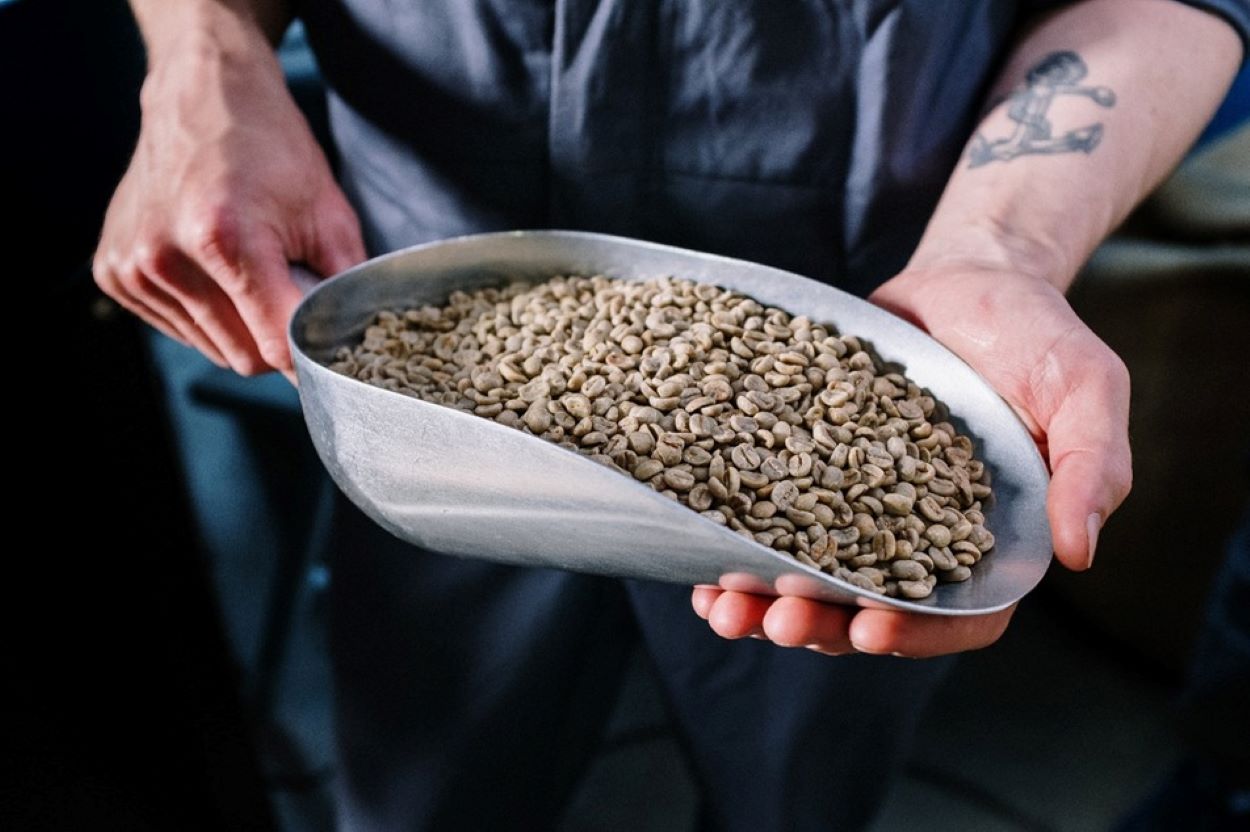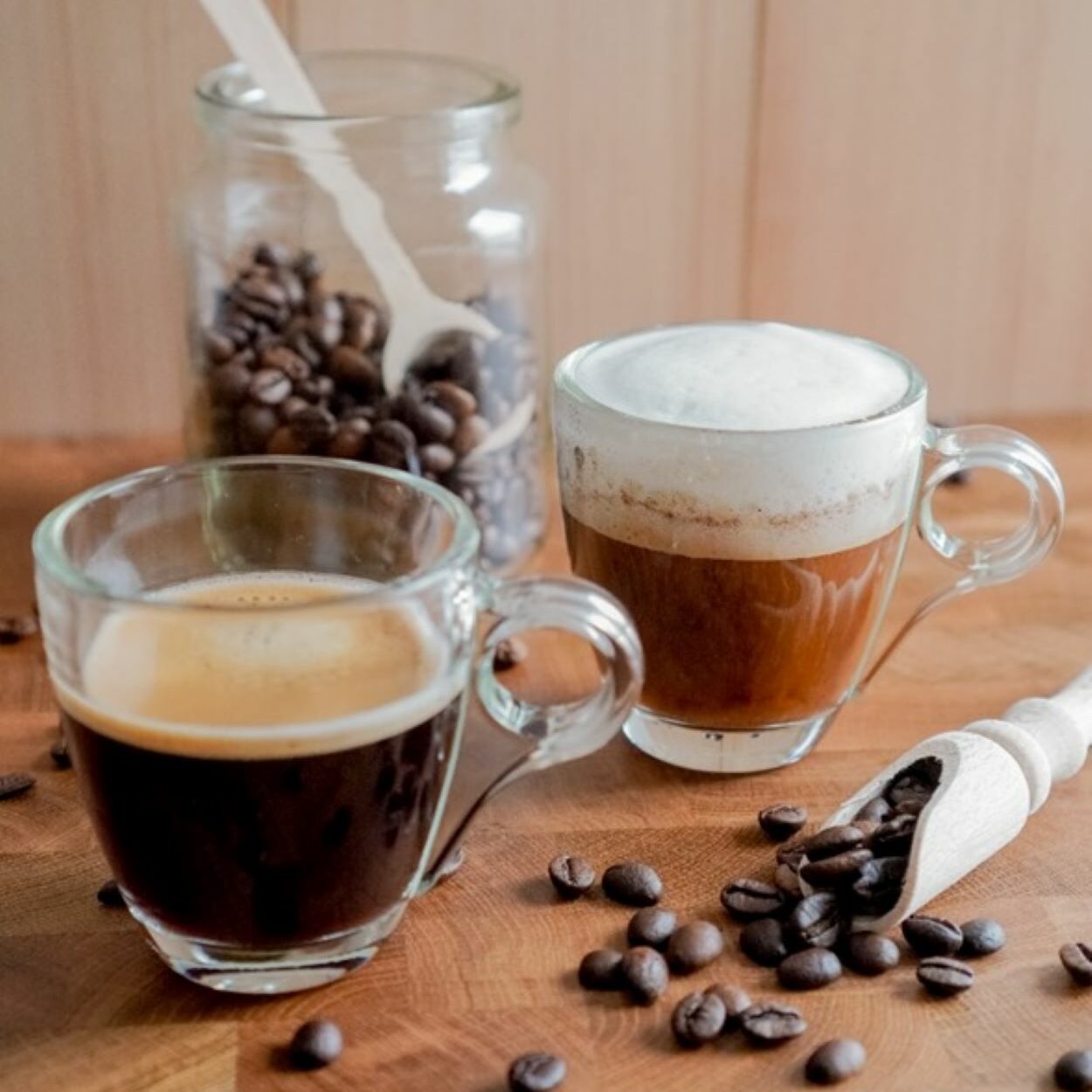Coffee contains caffeine, a natural stimulant that affects the central nervous system, providing a temporary boost in energy and alertness. Various other compounds also contribute to its taste, aroma, and potential health benefits.
The ripe coffee cherries are harvested to produce coffee, and the outer pulp is removed to reveal the coffee beans. Depending on the desired flavor profile, the beans are dried and roasted to varying degrees.
After roasting, the beans are ground, and hot water is passed through them to extract the soluble compounds, creating a flavorful and aromatic beverage known as coffee.
Coffee is enjoyed worldwide and is prepared and consumed in multiple ways, such as black coffee, espresso, cappuccino, latte, and more. It has become an integral or essential part of many cultures, often associated with socializing, relaxation, and starting the day on a refreshing note. Coffee is often called the “elixir of life” or the “dark nectar.”
Medium roast coffee has a somewhat more robust flavor and a fuller body than blonde roast, which has a light body and mild flavor. Compared to medium roast coffee, blonde roast often offers a sharper acidity and more caffeine.
In addition, while medium roast coffee is roasted for a little longer than blonde roast coffee, it is roasted for a little less time overall.
Blonde Roast

Blonde roast refers to a light roast level for coffee beans. It is symbolized by its light golden color and shorter roasting time than darker roasts. Blonde roast coffee is often associated with preserving coffee beans’ natural flavors and characteristics.
When coffee beans are subjected to a lighter roast, they retain more of their original flavors and acidity. Blonde roast coffee typically has a more lightweight body, higher acidity, and a milder taste than medium or dark roasts.
With a subtle toasted or nutty undertone, it can showcase more delicate and nuanced flavors, such as floral, fruity, and citrusy notes.
Blonde roast coffee is often chosen by those who prefer a more vibrant and acidic taste experience or appreciate the specific flavors of the coffee beans from a particular origin. It offers a refreshing and lighter alternative to darker roasts, allowing the natural qualities of the beans to shine through.

Blonde Roast Roasting Process
The blonde roast coffee roasting process involves preheating the roasting equipment, loading green coffee beans into the roasting chamber, applying moderate heat to dry the beans, listening for the first crack, monitoring the temperature and time to accomplish the desired roast level (typically stopping shortly after the first crack), and quickly cooling the roasted beans to halt the roasting process.
The result is a light brown coffee bean with a mild and delicate flavor profile.
Types of Blonde Roast
The specific types or varieties of coffee beans used can vary regarding blonde roast coffee. However, popular options and blends are commonly associated with a blonde roast.
Here are a few examples:
- Colombian Blonde is well-known for its smooth and well-balanced flavor. It often showcases Colombian Arabica beans’ natural sweetness, bright acidity, and subtle fruity notes.
- Ethiopian Yirgacheffe, particularly the Yirgacheffe region, is famous for its distinct floral and tea-like flavors. A blonde roast of Ethiopian Yirgacheffe beans can bring out these delicate flavors with jasmine, bergamot, and citrus notes.
- Costa Rican Tarrazu coffee is celebrated for its clean and bright profile. A blonde roast of Costa Rican Tarrazu beans can highlight the crisp acidity, medium body, and flavors of red fruit, chocolate, and caramel.
- Tanzanian Peaberry beans are known for their small, round shape and rich flavors. A blonde roast of Tanzanian Peaberry can offer a delicate yet vibrant cup with hints of berry, citrus, and pleasant acidity.
- Breakfast Blend is often created with a combination of different coffee beans, including those suitable for a blonde roast. These blends provide a balanced and approachable cup with mild acidity, subtle sweetness, and a smooth finish.
How Many Types Can You Use Blonde Roast?
This roast level is commonly used for brewed coffee, pour-over methods, and certain espresso-based drinks. It provides a brighter and more nuanced flavor profile, making it a popular choice among specialty coffee enthusiasts.
Blonde roast coffee beans can be used to create various coffee beverages. Here are a few examples:
Brewed Coffee
Blonde roast beans can make a classic cup of brewed coffee. Grind the beans to the desired coarseness and use them in a drip coffee maker, French press, pour-over, or any other preferred brewing method.
Espresso-Based Drinks
Blonde roast beans can also create espresso shots as a base for various espresso-based beverages. The lighter roast brings out different flavor profiles compared to darker roasts. You can use a blonde espresso for drinks like Americano, cappuccino, latte, or macchiato.
Single-Origin Brews
Blonde roast coffee beans often highlight the unique flavors of single-origin coffees. The lighter roast allows the specific characteristics of the coffee beans from a particular region or farm to be more pronounced.
It’s an excellent way to explore the nuances and terroir of different coffee origins.
Cold Brew
Blonde roast coffee beans can be used for cold brew preparations. A blonde roast’s milder and more delicate flavors can create a smooth, refreshing cold brew coffee with subtle acidity and a lighter body.
Grind the beans, steep them in cold water for an extended period, strain them, and enjoy the chilled result.
Medium Roast
Medium roast denotes a degree of roast applied to coffee beans during the roasting process. It falls between light and dark roast in color and flavor intensity. The medium roast has a medium-brown color and a balanced flavor profile.
In terms of taste, medium roast coffee balances the acidity and brightness of light roast and the fuller body and bolder flavors of dark roast. It tends to have a slightly richer flavor than light roast, with more caramelization and a hint of sweetness.
Medium roast coffee often exhibits notes of chocolate, nuts, and sometimes fruitiness, depending on the origin of the beans.
The caffeine substance of coffee beans remains relatively stable throughout the roasting process so that medium-roast coffee beans will have a similar caffeine content to lighter and darker roasts.

Medium Roast Roasting Process
The medium roast roasting process involves preheating the roaster, loading green coffee beans, and roasting them at temperatures between 180°C (356°F) and 205°C (401°F) until they reach a medium brown color, preserving a balance between acidity and richness.
Types of Medium Roast
American Roast
It is a medium roast with a light brown color and mild flavor. It has a balanced sourness and showcases the natural flavors of the beans.
City Roast
It drops on the lighter side of the medium roast with a medium brown color. It has a bright acidity, medium body, and subtle fruity or floral notes.
Breakfast Roast Medium Blend
It is slightly darker than the American roast, with a richer flavor profile. It may exhibit notes of chocolate, caramel, and nuttiness.
Regular/Medium Roast
It is a classic medium roast with a medium brown color and a well-rounded flavor. It strikes a balance between the acidity and the body, offering a versatile and approachable taste.
Guatemalan Medium Roast
It is known for its entire body and rich flavor profile. Medium-roasted Guatemalan coffee tends to have medium acidity, a velvety mouthfeel, and flavors that include chocolate, caramel, nuts, and sometimes hints of stone fruit.
How Many Types Can You Use Medium Roast?
Medium roast coffee offers a versatile flavor profile that can be enjoyed in various ways. Here are some common uses of medium-roast coffee:
- Brewing or Infusing Methods
Medium roast coffee is well-suited for various brewing methods, including drip brewing, pour-over, French press, and espresso. Its balanced flavor and medium body make it adaptable to different brewing techniques, allowing you to enjoy it according to your preferences.
- Black Coffee
Medium roast coffee can be enjoyed as black coffee, allowing you to savor its nuanced flavors. It is medium acidity and balanced taste makes it a trendy choice for those who prefer a straightforward, full-bodied coffee without any additions.
- Milk-based Drinks
Medium roast coffee is an excellent base for milk-based beverages such as lattes, cappuccinos, and macchiatos. The medium roast’s flavor profile can harmonize with the creamy texture of milk, creating a well-rounded and satisfying drink.
- Flavorings and Syrups
Medium roast coffee can be enhanced with flavorings and syrups if you enjoy experimenting with different tastes. Additions like caramel, vanilla, or hazelnut syrups can complement the natural flavors of the coffee, providing a personalized touch to your cup.

- Blends and Recipes
Medium roast coffee is often used in coffee blends, combining roasts and bean varieties to create a unique flavor profile. It can similarly be used in recipes for coffee-infused desserts, sauces, or marinades, adding a rich coffee flavor to culinary creations.
- Cold Brew
Cold brew coffee, which involves steeping coffee grounds in chilled water for an extended period, can be made with medium-roast coffee beans. The resulting cold brew tends to have a smoother, less acidic flavor than hot brewed coffee.
Blonde Roast vs. Medium Roast
| Characteristics | Blonde Roast | Medium Roast |
| Roast Level | Lighter in color, with a golden brown or yellowish tint | Medium-brown color |
| Flavor Profile | Delicate and mild flavor profile | Balanced flavor profile with slight richness and caramelization |
| Body | Lighter body | Medium body |
| Roasting process | It was roasted for a shorter duration, typically stopping before or shortly after the first crack. | It was roasted moderately, typically until after the first crack. |
| Versatility | It is often preferred by those who enjoy a lighter and more nuanced cup of coffee, allowing the unique characteristics of the beans to shine. It’s well-suited for those who prefer milder flavors and brighter acidity. | Medium roast coffee offers a versatile flavor profile, making it suitable for various brewing methods and accommodating a broader range of taste preferences. |
Conclusion
- Ultimately, choosing between blonde and medium roast comes from personal preference. A blonde roast may be selected if you prefer a lighter, more delicate coffee with brighter acidity.
- If you enjoy a balanced cup with slightly more decadent flavors and a medium body, medium roast coffee is a suitable choice.
- Blonde roast is achieved through a shorter roasting, stopping before or shortly after the first crack. Medium roast requires a moderate roasting course, continuing beyond the first crack.
- Blonde roast typically has a lighter body, while medium roast offers a medium body.
- Blonde roast coffee generally has a lighter body, which refers to the perceived thickness or heaviness of the coffee in the mouth. Medium roast coffee typically has a medium body, balancing the more lightweight body of blonde roast and the fuller body of dark roast.

